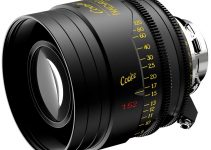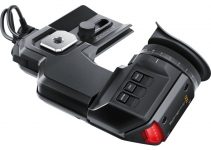Wireless microphones just took a big jump forward and I am delighted to see it! I have been using wireless lav’s on a daily basis for years now, shooting for broadcast TV. I have tried a good number of different units and as always there are pros and cons.
Let’s join Max Yuryev to have a look at two of the latest competitors from Rode and Sennheiser – Wireless GO vs XSW-D lavalier set.
I watched this video recently and it helped me make my decision. Sorry for the spoiler but I think that the Rode kit has the Sennheiser beaten on almost every count. Here’s why:
Both of these kits are small, way smaller than the bricks I have been handing presenters for years now. The previous generation Sennheisers, still available, and the Rodelink Filmmaker kits seem massive in comparison. When it comes to hiding packs, tucking into pockets and clothing, the smaller the better so both of these are a huge advance. The Rode, however, is considerably smaller.
One reason for the larger size of their predecessors is the battery. The new kits have built-in L-ion batteries, rechargeable, while the older models use AA batteries. This was my only real concern about buying new packs.
I can always find AA batteries in a shop if I need them, recharging the pack’s internal batteries takes time. They can be charged with portable power bank solutions, but it will take a couple of hours. Again though, Rode wins this battle with 7 hours of internal battery life versus the Sennheiser’s 5 hours.
The Sennheiser comes on a protruding cold-shoe mount and it looks great, but the Rode looks better as the whole pack clips neatly onto the shoe without sticking up. Another clever piece of design from the Australians.
The display on the Rode receiver is excellent and shows all the information you might need at a glance. The Sennheiser is limited to a few simple blinking LED’s, fine but it’s another win for Rode.
The Rode packs come with a -6 and -12dB pad button to help you set the right output level for your camera. The Sennheiser offers no such option. This means you can adjust your output signal on the Rode to ensure the right input to your camera.
Both systems use 2.4GHz with frequency hopping to maintain strong signals so this one is a tie… except for the fact that you can use 8 Rode Wireless Go packs together at one time and only 5 Sennheiser kits together.
The most important factor for any wireless microphone kit is of course how it sounds. For me, this simply comes down to the lavalier microphone attached to it. The Sennheiser kit comes with the stellar ME 2-II and I really like these microphones, they sound fantastic.
The Rode doesn’t include a lav mic in the box and while they suggest you purchase the Rode Smart Lav to accompany the kit, you can choose any mic you wish, including the ME 2 – II. This is exactly what I have done and it means these kits sounds exactly the same.
This brings us to the final consideration – price. Even when adding the purchase price of an ME 2 – II microphone, the Rode kit will be significantly cheaper than the Sennheiser!
I feel like Rode have knocked it out of the park with their new kit, so much so that I have already ordered three of them!
[source: Max Yuryev]
Order Links:
Rode Wireless GO Compact Wireless Microphone System (B&H)
Sennheiser XSW-D Portable Lavalier Set (B&H)
Disclaimer: As an Amazon Associate partner and participant in B&H and Adorama Affiliate programmes, we earn a small comission from each purchase made through the affiliate links listed above at no additional cost to you.




